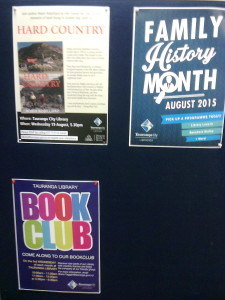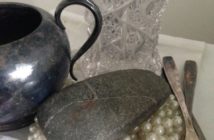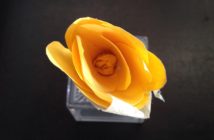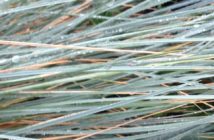 Great month for reading in between dodging the showers, watching Matariki bring spring to the magnolia tree in front of the kitchen window, “doing the markets”, leaping about like a teenager at the Modern Maori Quartet at Baycourt, cruising the guests at the Arts Festival launch with Dhaivat Mehta for ARTbop photo images; sharing in the great sense of achievement that has seen Tracey Rudduck-Gudsell and Creative Tauranga Charitable Trust bring the wonderful Hairy Maclary and Friends statues down to the Tauranga waterfront; viewing the exhibitions at the Creative Tauranga Galleries with its curator Millie Newitt and an August highlight – Tauranga City Library’s Harley Couper led National Digital Forum unconference – more about that later. . Biggest surprise from the literary supplies transported by “Balu’s Book Truck” – “The Torch” by Peter Twohig, a child’s eye view of Melbourne life of a certain period that made me laugh so much I thought I’d fall out of bed. The usual car load of contemporary “whodunits”, food and design books courtesy of our fabulous Tauranga City Library has been carried in and read (or looked over). So here we go:
Great month for reading in between dodging the showers, watching Matariki bring spring to the magnolia tree in front of the kitchen window, “doing the markets”, leaping about like a teenager at the Modern Maori Quartet at Baycourt, cruising the guests at the Arts Festival launch with Dhaivat Mehta for ARTbop photo images; sharing in the great sense of achievement that has seen Tracey Rudduck-Gudsell and Creative Tauranga Charitable Trust bring the wonderful Hairy Maclary and Friends statues down to the Tauranga waterfront; viewing the exhibitions at the Creative Tauranga Galleries with its curator Millie Newitt and an August highlight – Tauranga City Library’s Harley Couper led National Digital Forum unconference – more about that later. . Biggest surprise from the literary supplies transported by “Balu’s Book Truck” – “The Torch” by Peter Twohig, a child’s eye view of Melbourne life of a certain period that made me laugh so much I thought I’d fall out of bed. The usual car load of contemporary “whodunits”, food and design books courtesy of our fabulous Tauranga City Library has been carried in and read (or looked over). So here we go:
DARKNESS ON THE EDGE OF TOWN JESSIE COLE Fourth Estate, Harper Collins, Australia 2012
Australian based is exactly what the back cover blurb says: “…a haunting tale that beguiles the reader with it’s deceptively simple prose, its gripping and unrelenting tensions, and its disturbing yet tender observations” Weird, believable and totally readable.
BAD INTENTIONS KARIN FOSSUM Harvill Secker UK 2010
First published by J.W. Cappelens Forlag AS, Oslo as Den onde viljen, 2008, translated to English by Chartotte Barslund 2010
The back cover blurb uses the word “creepy” I found this book not so much :”creepy” as almost poignantly sad as a record of the power of youthful relationships and the uncontrollable spreading of action, effect and guilt. I hope that doesn’t spoil it for you. Also on the back cover: “There is no room for debate: the most important female writer of foreign crime fiction at work today is the Norwegian Karin Fossum. The Rough Guide to Crime Fiction.” But I’d still call this a “disturbing read”
THE DEAD CALLER FROM CHICAGO: a mystery JACK FREDRICKSON St Martin’s Press, New York, 2013
How could I not love a text dense book where a character wears a “Chartreuse knit hat”. Green chartreuse is my favourite liqueur. Unlike its green/yellow sibling, green Chartreuse is not “a sweet, syrupy alcoholic liquor..” Its sinus clearing firewater: the small after dinner sips of which (in my younger days) could revive both flagging social spirit (pun) and conversational ability. I suspect the hat was the mucky yellow kind of colour. Not the best “whodunit” I’ve ever read but great descriptions of everything and an interesting outcome.
You could read far worse.
THE TORCH PETER TWOHIG Fourth Estate, Australia, 2015
This is one of those books you pick up because of its cover. Congratulations to Darren Holt of HarperCollins Design Studio. And, congratulations to Australia and Melbourne of the 1960’s because this is the site of this narrative. This book is an amazing child’s eye view of everything. If it wasn’t that it’s a big book, you wouldn’t put it down. It was “gripping”, from the moment you opened it the narrator’s hand reached out and clamped its fingers on your brain. I’m telling you that this is a gem, like finding a pearl in your fish and chips. “A madcap, brilliantly shambolic and irresistibly fun novel about loss, discovery and living life to the full. The Torch is a ripper of a ride” …..you can say that again or “like dope and down” I first went to Melbourne as a sixteen year old and even then that city pushed its cultural tentacles into my soul. I’m sure that’s also a factor I’m gushing about this book, also the sixties setting and it originality. What else did I adore: well I only found this out when looking for the publication date; it looks as though this is an all Australian effort right down to the printing on natural paper from sustainably grown paper producing forests. This is a classic gem. If you’re “sick in bed”, on holiday, at a loose end, own a broken television (yes) get this book out of the Tauranga City Library.
AND MOVING RIGHT ALONG:
THE WILD BUNCH Movers, shakers and groundbreakers of the New Zealand wine industry JOELLE THOMSON New Holland Publishers (NZ) Ltd, New Zealand 2012
Fascinating if somewhat school journal style and format. Just loved the background information and the “of the time “photographs. Some inspirational pioneers in this industry.
HANDBOOK ANS WESTRA PHOTOGRAPHS Published by Blair Wakefield Exhibitions to coincide with the exhibition tour of the same title. Wellington 2004
This book captures the essence of New Zealand. The introduction/Mihimihi by Poet Hone Tuwhare says” Ans’s pictorial record isn’t employed to shock, or brutalise the senses, but draw on the human store of easeful identification, that Ans’s work draws out from the viewer, without the trumpets, or harps and the wheedling violins of high drama! The backcover photo reveals an angelic, impossibly youthful looking immigrant Westra: an unlikely recorder of rural and urban New Zealand and “Washday at the Pa”.
AND THEN: THE THINGS THAT MATTER NATE BERKUS
Spiegel & Grau, New York 2012
This is another very readable and enjoyable example of narrative and decor. There’s the family history followed by short stories about the lives and environment of a variety of clients of this diversely talented decorator. It’s also the story of his “coming out” and the tsunami he survived but his partner didn’t. It’s a read with pictures and I enjoyed it. Leave it on the table and pick it up and put in down after each section.
AND NOW TO THE FOOD:
An Artist’s gotta eat! ARTbop believes the definition of creativity includes the creation of food.
 It’s inescapable that at the moment many in our society are not able to afford fusion food, porcini or the luxury of organic food. In fact many are finding it hard to afford food.Many in the creative arts community are not the highest earners and possessors of the biggest “disposable incomes.”
It’s inescapable that at the moment many in our society are not able to afford fusion food, porcini or the luxury of organic food. In fact many are finding it hard to afford food.Many in the creative arts community are not the highest earners and possessors of the biggest “disposable incomes.”
Over the years I’ve picked up a number of valuable pointers from my mother, who lived through the “Great Depression”, World War II and could recount stories of men arriving at their English village backdoor asking if “you can spare a crust and a cup of tea”. Every day my father went off to school with two lunches. I learned the value of food and how to cook on a stove made from a large tin, from “Fritz” who as a child lived through the Hunger Winter in World War II Holland and my Fourth Form new migrant, Dutch-Latin teacher who cried as we laughed that she had eaten Tulip bulbs during that same war winter. I also learned that you can thicken soup with porridge oats from a staunch and dignified Maori client who “fostered” ongoing numbers of the unwanted or the difficult. I learned from a Dutch-Indonesian friend who’d spent part of her childhood in a Japanese prison camp ( who saved every newspaper, tin and jar in the large basement of her house) the joy of good cooking and shared food. I was introduced to real Italian food by an Italian-Kiwi couple and Indian food by extended family. And then of course there is my hero Ray McVinnie whose recipes I’ve collected over the years and who can make a cabbage based soup a thing of beauty. This importance of people in the creation and sharing of food shines through in the Gennaro Contaldo cookbook, “Ramily Italian.”
FAMILY ITALIAN Simple, Delicious Favorites Made to Share GENNARO CONTALDO Stirling Epicure , New York, 2012
There is a smear of what looks like chocolate cake mixture across the front of this book. The hardcover is torn from the inner cover binding and this book opens out at every page and lies flat. This is a well used book. The collection of recipes and food are interwoven with family associations and lots of photographs of the chef author and his extended family. The recipes are arranged in categories of ingredients and events. There’s even a recipe for Zuppa Inglese (I can write that without referring to the book and one day I’ll tell you why). This is a book of cookable and eatable food acquired from family and friends by the same osmosis of acquisition. A lot of the recipes are affordable and nutritious and pretty easy to cook. Wouldn’t you know, I loved this book too .
Here’s one of Contaldo’s additions to your life: He says this is a recipe of his wife Liz made for her for their daughters – perfect for kids because of the veges and because it can be blended into a smooth sauce. It can be frozen in small batches and reheated if you’re in a hurry. Great for grownups too!
Penne al pomodoro e verdurine – Penne with tomato and vegetables
Serves four
4tbsp extra virgin olive oil, half an onion (grated) 1 small carrot (grated) half a zucchini (courgette) grated, 6 fresh basil leaves (optional) 500ml or two generous cups of passata (strained tomatoes-you can buy this (including good old Watties) in the local supermarkets.2 teaspoons of vegetable stock powder, salt and freshly ground black pepper. 300 grams of penne Optional – grated parmesan to serve
Heat the olive oil over a medium heat sweat (lightly cook) the grated veges for 3 – 4 minutes – the onion will soften. If you’re using the fresh basil stir it in now with the tomatoes and stock powder. Bring it to a simmer, turn the heat down to low and then cook on low for 25 minutes. Season to taste. (if you’re making this sauce for children, leave out the stock powder) Cook the penne pasta until al dente (still firm not all sloshy and slimy)
Drain it well and them add to the sauce and mix it well. Serve it immediately with a bowl of grated Parmesan (if you want to add that)
If you don’t want to be bothered grating all the vegetables you can just chop them up but the cooking takes longer – its six of one and half a dozen of the other time wise.
DESTITUTE GOURMET Stunning Food from Small Change SOPHIE GRAY Random House New Zealand, 2000, 2009 (10th anniversary edition, revised best seller)
As the title states this is a book about doing the absolute best with what you have. There are recipes transforming the ordinary into the edible wonderful. I had a go at making the “Frugal Flour tortillas” – fun to make but I think the current cost of power probably made them not so frugal and, they are so yummy I ate half of them as they came out of the pan. While the front cover is twee and slick, the inside is fabulous. You could do a lot worse than try some of these economical and yummy recipes. And again, this is a book about family, friends, society and making what you’ve got an expression of creativity.
Many of Sophie’s recipes are about “maximising” the effect and flavour of the expensive ingredients. There are magic chicken dishes which use small amounts of chicken meat and a super-sized version of a sausage roll that creates the basis of a filling meal. Her Bean and Sausage Casserole, “maximises the lovely sausage flavour while using only a few sausages.” Of course the sausages Sophie suggests you use are “real” sausages.
Bean and Sausage Casserole Serves Four
3 good flavoursome sausages, 1 chopped onion, 2 big chopped carrots, 1 tablespoon (tbsp) flour, 1 x 400 gram can of baked beans, 1 cup of beef stock, 1 tbsp Worcestershire sauce, 1 tbsp brown sugar, 1 teaspoon (tsp) whole grain mustard, salt and pepper.
Heat the frying pan until hot, prick the sausages all over and fry quickly until they brown on the outside. Take them out and them saute (lightly fry) the onion and the carrots – the onion will go clear and golden, add in the flour, the baked beans and stir well. Add the stock, Worcestershire sauce, brown sugar and mustard. Slice the sausages and put back into the pan. Season to taste and simmer until the sauce has thickened and the sausages are thoroughly cooked. Serve with buttery mash (you could use potatoes, kumara or a mash mix) and green vegetables.
I’ve made casseroles like this in the slow cooker as well as on the top of the “stove”. I’ve also found that they taste better the second day (as do pasta sauces).
Sophie’s book is another one I’d give to a student off to University or anyone wanting to eat creatively and well on a teeny, tiny food budget.
And then there is Kiwi minnestrone: My Japanese prison camp surviving friend produced decorated birthday cakes for my young children and gave us and them many happy times, shared with a droopy eyed and eared Beau Bassett: their family hound. What I remember most of all was my friend’s version of a rich meat and vegetable soup/stew – Minnestrone. Not a lot of meat, it was cut into the tiniest little cubes but the flavour was there. Lots of vegetables and beans. When I’ve been busy I’ve cheated. I’ve browned the meat (usually cross-cut blade steak or chopped up bacon) in olive oil in the bottom of the soup pan, chucked in coarsely chopped onion (half or a whole one depending how much soup I think I’m making). I’ve had all the root vegetables chopped and ready to throw in to brown too and I just drop those in on top of the browned meat. I have a big wooden spoon and I move the whole lot around so it doesn’t burn. When I’m happy that everything’s got “a bit of colour” I tip in a tin of some kind of tomatoes then some water and maybe a tin of rinsed chickpeas. Lots of rosemary and black pepper (and sometimes garlic chives, parsley and finely chopped cabbage) . Really busy, I’ll use a tin of Watties baked beans – there’s still something about the combination of baked beans, bacon and vegetables all sloshing round in a bowl eaten with crunchy bread and butter that really kicks off winter cold. The great thing about this kind of soup is that it can be frozen in portion sized pots to drag out in a hurry and microwave or served on a beautifully set table with the bread in a basket, the butter in a dish and a glass of red wine – you’ve got a filling lunch for friends.
Rosemary Balu. Rosemary Balu is the founding and current editor of ARTbop. Rosemary has arts and law degrees from the University of Auckland. She has been a working lawyer and has participated in a wide variety of community activities where information gathering, submission writing, community advocacy and education have been involved. Interested in all forms of the arts since childhood, Rosemary is focused on further developing and expanding multi-media ARTbop as the magazine for all the creative arts in the Bay of Plenty, New Zealand.




